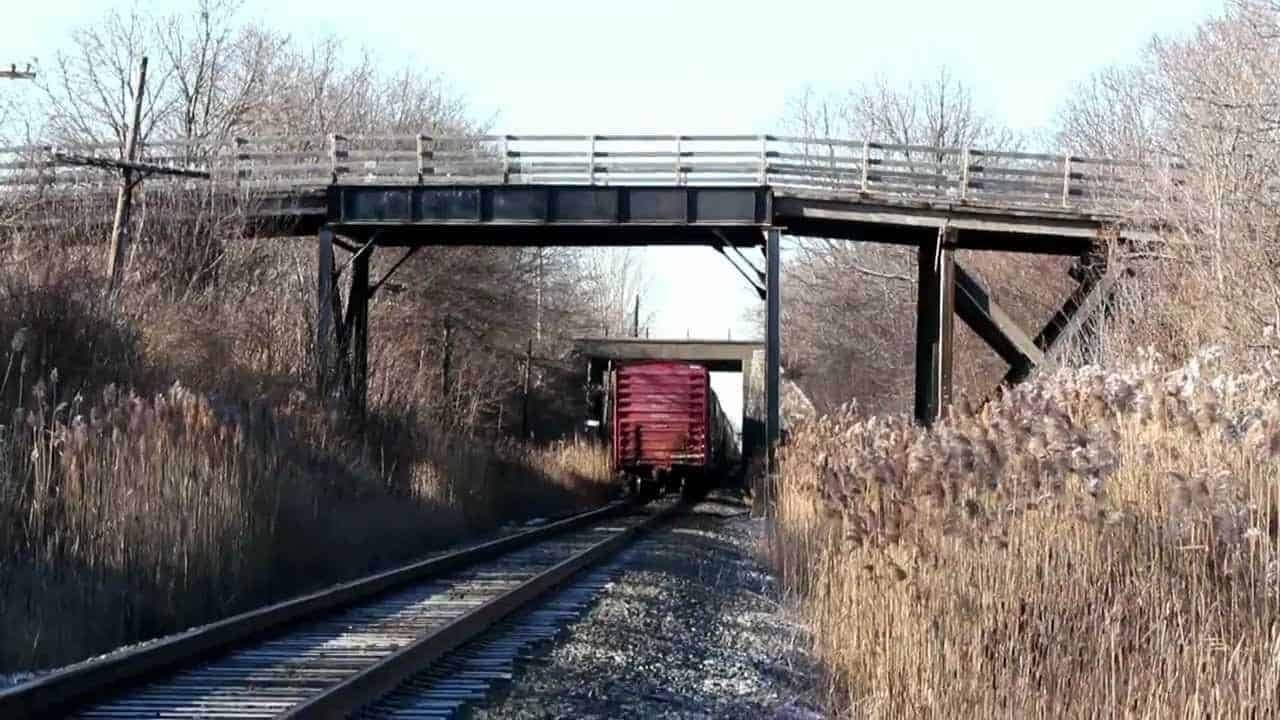The end of the line for Oshawa’s iconic Albert Street Bridge
Published July 20, 2023 at 4:43 pm

There’s something about the Albert Street Bridge that just says ‘Oshawa.’
Like the Victorian-style row houses along Olive Avenue just to the north – tiny, low income homes that just ooze character – the iconic Albert Street Bridge, a century-old wooden structure that always looks (and sounds) like it’s going to crumble to the rail tracks below, is a symbol of the resilience of the city.
But not for long.
The bridge has been closed to traffic for nearly a year-and-a-half (it was barricaded off for an “inspection” on February 11, 2022) and is now slated for demolition to make way for the future GO Station along nearby First Avenue that will require widening of the CP tracks.
The new alignment for the tracks for the future stations at Thornton Road and First Avenue will see the trains swing north from the existing Oshawa GO along a GM spur line to the other side of Highway 401, where they follow the CP tracks on their way to two additional future stations in Courtice and Bowmanville.
The Albert Street Bridge runs over that CP Rail corridor between Albany Street and Fisher Street and has been identified in numerous reports from GO operator Metrolinx as being “too low to allow GO trains to pass underneath.” The bridge’s removal would therefore be necessary for the GO Train expansion to proceed.

The potential to replace was still alive – in theory, anyway – until recently, when Oshawa Councillor Brian Nicholson acknowledged on his socials that he had been told neither Metrolinx nor CP Rail have any plans to replace it.
The bridge has been standing more than 100 years; or perhaps 97; no one seems to know for sure. One old newspaper report talked about building a similar structure on Cochrane Street in Whitby and “several others to the east” starting in 1914; another story from 1986 mentioned the Albert Street Bridge as being 60 years old at the time, placing the bridge’s completion in 1926.
It’s old, in any case.
There used to be speed signs at the entrances to the bridge, warning drivers to slow down. But the signs were for tourists, newbies and thrill seekers. Regulars knew that if you hit the peak of the bridge doing anything faster than 30 km/hr you were running the risk of ripping out the undercarriage of your vehicle.
Or worse.

A woman suffered serious injuries after hitting the bridge in this 2018 car accident. DRPS photo
Still, drivers used the bridge anyway, with more than a few Oshawa residents going out of their way to use it just to hear the rumble on the old wooden beams as your car carefully makes the crossing.
No longer, as the bridge will remain closed to traffic – pedestrian, bike, motorized vehicle or otherwise – until it is demolished. That will likely happen this fall after the revised Environmental Assessment is approved and construction on the GO Train expansion can begin.
When that happens Albert Street will become a street split into three segments, with rail tracks stopping progress twice. The road begins at Simcoe St. S and runs just a couple of blocks before ending in a cul-de-sac at Annis Road and the CN tracks. It re-starts at Bloor Street and crosses Highway 401 (on a bridge completed in 1941 that is also being demolished – and then re-built – later this year) before coming to a stop for the second time at the CP tracks and the soon-to-be gone Albert Street Bridge.
The final leg crosses Olive Avenue, where it becomes a one-way street (northbound), until it reaches its final destination at King Street in downtown Oshawa.
INdurham's Editorial Standards and Policies




